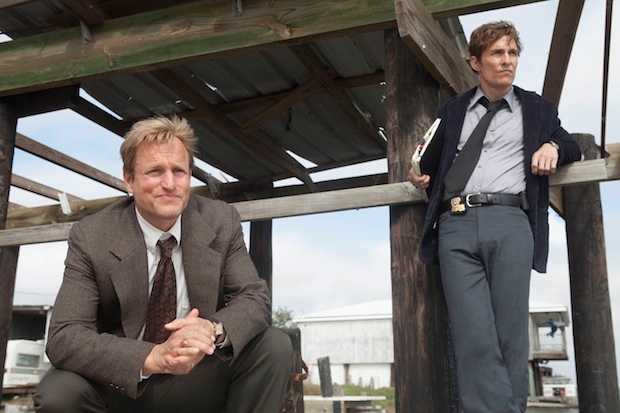I’ve got this brilliant idea for a major new cop series. It’s called Chalk and Cheese and, though you won’t have guessed this from the title, it’s about these detective partners who couldn’t be more different. Why, they’re like two incredibly dissimilar things, one, maybe an edible, milk-based product, the other some manner of mineral that you use to write with. Chocolate and Graphite: that’s another possible title, then.
So, anyway, what I thought is that one of the characters would be a normal, sensible family-man type. And the other, by way of humorous and dramatic contrast, would be completely out there. He could be addicted to drugs and alcohol, borderline autistic, psychologically damaged, a chain-smoker, a grumpy, antisocial sod too — but redeemed by his extraordinary insights into the criminal mind. Almost, perhaps, because he’s so dangerously close to being a psycho himself.
Well, it definitely worked for Sherlock, didn’t it? And now it appears to be working, too, for the latest hot HBO series from the US — True Detective. Woody Harrelson plays the Martin Freeman boring character and Matthew McConaughey plays the Benedict Cumberbatch interesting one. He’s so interesting that he appears in two incarnations: clean-cut and youngish weird; and, almost unrecognisably, drink-ravaged and older weird. (I say ‘almost unrecognisably’, though you’ll definitely know who it is if you’ve seen Dallas Buyers Club because he looks like his character from that.)
You may deduce from my snarkiness that I’m about to be critical. But I’m not, actually. It just amuses me how so much successful TV detective drama is dependent on archetypes, and how desperately it strives to disguise its lack of originality by using various distracting ruses.
One ruse, employed supremely well here, is location and era. It’s set in the mid-Nineties Louisiana backwoods, where the modern world has yet to catch up and where you feel a girl could quite easily go missing unreported by the white trash slouched on their decrepit verandahs; where, if there is a serial killer on the loose, he’s bound to be a particularly warped one, prone to decorating the naked corpses of his victims with deer antlers and surrounding them with spooky, Blair Witch Project-style twig arrangements.
But it’s told from the vantage point of the present, where a new set of cops — all black this time, for so much have the times changed in Louisiana — are investigating a remarkably similar murder two decades on. In a variation on the ‘reluctant cops called out of retirement to solve one last case’ theme, the McConaughey and Harrelson characters are being interviewed on camera by their modern successors. You’re not allowed to smoke in the police station any more, but McConaughey does anyway, because hell that’s the kind of guy he is — and also because it’s the kind of two-fingers-to-health-Nazism that makes the series’ reactionary target audience (e.g., me) deliriously happy.
The big question, though, and it’s far too early to answer at this stage, is: will it be worth sticking with? In some ways, perhaps, it doesn’t matter because if it’s that good you can always get the boxed set. But in other ways, it does matter because life tends to have more purpose when you’ve got a gripping drama series on the go. For me, the world has been sorely lacking since Breaking Bad ended and I could really do with something to tide me over till the start of Game of Thrones Season 4.
Some people have complained that True Detective is a bit slow. This may become a problem later (as it did for me with that Southern vampire series True Blood) but at the moment I see this as a strength: it allows us the time to wallow in that Louisianan torpor and sleaze, and to relish the nuances of the two main characters (both McConaughey and Harrelson at the top of their game). Also, too much action can make you feel a bit sordid, like you’ve guzzled too many Big Macs when you should have been eating home-made pot-au-feu.
What does worry me more, though, is that faint sense of déjà vu I’m getting. I’m sure it’s not the first serial-killer drama I’ve seen where the victim’s body is artfully arranged with stag’s horns. In fact, it all seems like a greatest hits mélange of Blair Witch, Manhunter, Seven and those various pornographically violent, ultra-detailed crime shockers you see on the BBC rather too often. Mind you, that does give me another brilliant idea for an exciting, original new serial drama. It could be called Spookydamagedreligiousnutprettygirlmutilator. Trips off the tongue rather well, don’t you think?







Comments